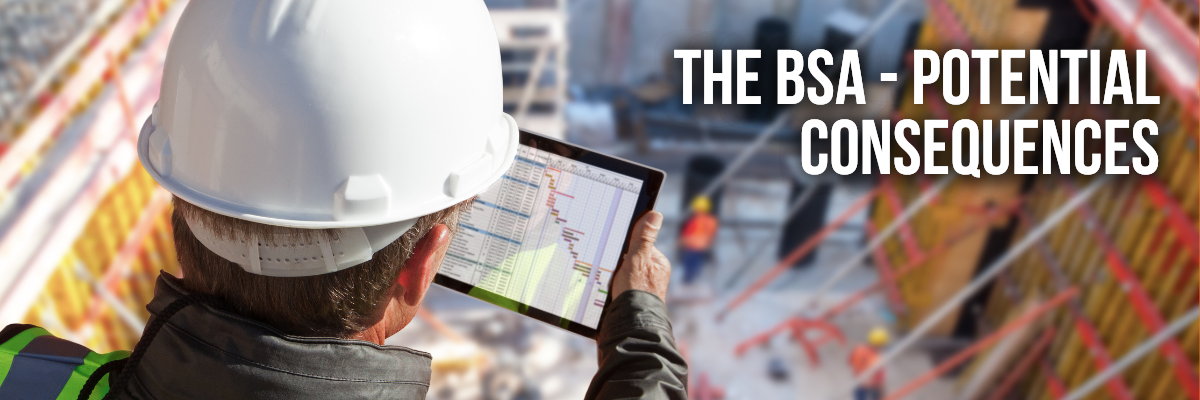The overarching theme behind the Government’s position, that innocent leaseholders should not be saddled with the financial consequences of their homes being clad in dangerous materials, is welcome. The statement will bring huge relief to the tens of thousands of families who have suffered financial and emotional distress for too long.
A complex problem
The statement does, however, give both construction and insurance industry commentators cause for concern. Equally, leaseholders might well feel that it leaves important questions unanswered and simply does not go far enough. Whilst the additional money (wherever it ultimately comes from) will assist with the removal of dangerous cladding from buildings between 11-18 metres, the cladding is very often only part of the problem.
In many cases, including some examples from our own claims files, the problems extend deep into the interior of the building. Missing or badly installed fire stopping, problems with insulation, poor smoke ventilation and other issues with the fire safety performance of buildings are recurring areas of concern. The costs associated with fixing the long list of fire related dangers are currently unknown, as is the identity of who will pay to address them.
Very often, another feature which is unknown is who will have the desire, technical skill, experience and supporting insurance protection to undertake the remediation work in the first place. Without exception, all contractors, consultants, architects and engineers have faced a series of extremely difficult PI insurance renewals over the last few years, which have seen costs and excess levels increase, whilst cover for ‘fire safety claims’ has been significantly reduced, or in many cases excluded.
Whilst clients of Griffiths & Armour enjoy a specification of cover that offers some of the broadest protection in the market, particularly for work on new buildings, we know that many others are operating with a PI insurance product that offers either no protection at all, or would act to cover them in only very narrow circumstances.
Troublingly, for those who currently enjoy some form of cover, no one can give guarantees as to what the future holds.
Consequently, whilst welcoming the Government’s destination: that no innocent leaseholder should pay to fix their dangerous cladding; we must again counsel over the route.
The ‘unintended consequences’
The consequences of both the message and reality of extending the DPA period and imposing liability on developers will never be truly known until the dust settles in perhaps a decade’s time. The more immediate impact will be to invite those PI insurers who are left in the much-reduced pool to think again about whether they should give up on this class of business altogether.
However well intended, there is an inevitability that insurers will view the retrospective changes to the DPA with alarm. Having recently been required to price in what with hindsight looks like a more ‘modest’ change to the limitation period under the DPA, what additional sums of money do they need to set aside to meet what now becomes an additional 24 years’ worth of potential claims?
Perhaps even more importantly, if Government are prepared to change the goalposts here, what other retrospective changes can be expected next?
For leaseholders themselves, the newfound ability to instigate complicated (and no doubt costly) litigation in order to seek resolution seems like a very double-edged solution to their problems.
In forcing developers to pay over £billions, insurers will inevitably view those sums as inevitably flowing down the supply chain and sitting with those contractors and construction professionals who remain. Will that be ‘natural justice’? In some cases, that might well represent a fair outcome. No one can deny that there are firms operating in the construction industry who share some culpability for this crisis.
However, all too often, as we and many of our clients will know from their own experiences, the extent of a firm’s culpability for damages isn’t necessarily reflected in the amount of damages that they ultimately must pay. When they develop, the PI claims faced by contractors and consultants will have many of the hallmarks of a typical construction claim: they will be complex multi-party disputes, where ‘blame’ ought to be apportioned to reflect errors both small and gigantic.
Whether or not the costs imposed will bear any relation to the size of the contribution to the problem, turns upon whether or not all the parties involved in the dispute are still solvent and insured. Joint and several liability will again become a significant burden for those who may have done little wrong, but who are the ‘last firm standing’.
Given the potential for that claim, if articulated under the DPA, to include relevant activity over the past 30 years, it begs the question what type of firms will still be around in the days ahead to pay for the sins of the past?
Whilst there needs to be recognition of the funding provided by Government to date, there is also the question of whether failures of government and regulation over past decades have been properly reflected in what, ultimately, the taxpayers’ contributions ought to be to remedy this sorry state of affairs. The latest testimony to the Grenfell inquiry on the Government’s role confirms (if confirmation were ever needed) Hackitt’s view that the ‘system failures’ were far reaching.
We also recognise the policy dilemma in which the Government today find themselves. On the one hand, there is clearly a need for a properly functioning PI insurance market, not least because that’s critical to being able to remediate dangerous buildings. But on the other, there is a need to send strong messages that those culpable must contribute their fair share. There is a dichotomy here though which is difficult to resolve; the more radically and forcefully they push this approach, the less likely a properly functioning PI market becomes.
Is there another way?
Meanwhile, the Irish Government have announced a package of measures designed to alleviate some of the pressures in the Irish PI market. These include limiting liability, recognising that PI insurance levels are too high and recommending significant reductions in limits, as well as other measures and proposals aimed at creating a better – perhaps more equitable – environment. Whilst the proposals put forward by the Irish Government cater for their own particular sector, much in the document is recognisable from a wider UK perspective. Time will tell if the UK Government follow their lead.
Consequently, back in the UK, there is a real need for a much broader ‘reset’ and the creation of a multi-track approach:
- First, we need to understand and categorise the nature and scale of the fire safety work that needs to be undertaken and that work needs to be prioritised such that where there is a threat to lives, that work is started now;
- Second, whilst some of that important work has started, those involved in that critically urgent remediation need certainty as to their ability to be protected from valid PI claims arising from that work. Alongside a lack of appropriately qualified and experienced people, worries around insurance are acting as a critical brake on this activity. Therefore, that guarantee must initially be underwritten by Government, with a clear plan to equitably apportion cost across Government, construction, and the insurance industry. A ‘grand bargain’ is needed, but the detail of that bargain can’t delay any longer the remediation of dangerous buildings.
- Third, and in time, the commercial, legal and operational environment for those designing and constructing our built environment needs to be changed. The imbalances in risk and reward that have, in part, led to the current crisis need investigating and resetting. We need to use the opportunity of the once in a generation change the Building Safety Act will bring:
- For Government to change the way it procures construction services, simplifying and standardising contracts, resetting the risk/reward imbalance and placing emphasis on value for money and safety.
- How the legal, insurance and operational environment can be changed to allow UK Construction PLC to prioritise ‘safe and good’ rather than ‘quick and cheap’.
- If technologically enabled collaboration is to be the future, how can we remove the barriers and meaningfully and substantially address the legal and insurance problems true collaboration brings? Vague references to ‘project policies’ or Integrated Project Insurance are woefully insufficient.
We are pleased to have supported our own industry body, the British Insurance Brokers’ Association in its work in directly lobbying Government for change. We fully support and endorse their calls for action, published recently in their 2022 manifesto on these issues.
We will be working with them and others through the rest of the year to try and assist in bringing resolution to some of the difficulties we all in our various ways will be facing this year.
To support this work, we will be holding events to bring as many of our clients together as time and space allows, to discuss the challenges and explore solutions at a series of roundtable events up and down the UK and Ireland. We have already hosted clients in London and Glasgow and looking forward to seeing many more in the months ahead.






